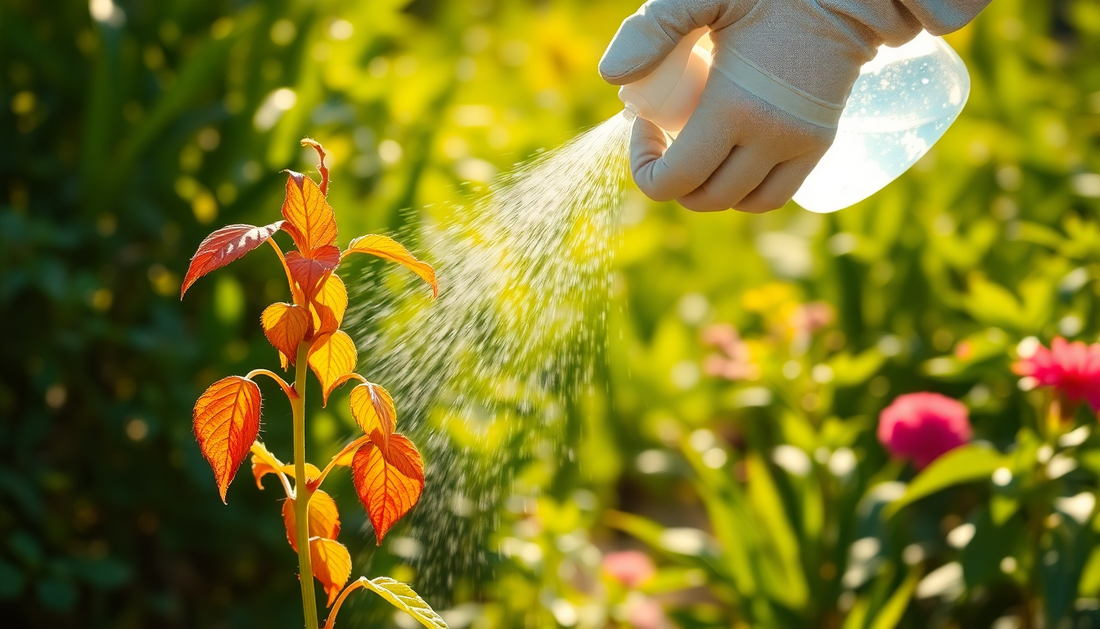
Reviving Sunburnt Plants: A Guide to Restoring Radiance
Share
As the sun beats down relentlessly, our beloved plants can sometimes fall victim to its scorching rays. Sunburnt foliage, wilted leaves, and stunted growth can be a heartbreaking sight for any gardener. But fear not, with the right knowledge and a little TLC, you can nurse your sun-stressed plants back to vibrant health. In this comprehensive guide, we'll explore the causes of sunburn, the signs to look for, and the essential steps to revive your plants and restore their natural radiance.
Understanding Sunburn in Plants
Plants, much like humans, can suffer from the damaging effects of excessive sun exposure. Sunburn in plants occurs when the delicate tissues of the leaves, stems, or flowers are subjected to prolonged direct sunlight, often exacerbated by high temperatures and low humidity. This can lead to a range of visible symptoms, from discoloration and wilting to tissue damage and even cell death.
Causes of Sunburn
The primary culprit behind sunburn is the intense UV radiation emitted by the sun. When plants are not acclimated to these high levels of light, their natural defense mechanisms can become overwhelmed. Additionally, factors such as sudden changes in light exposure, lack of shade, and poor soil moisture can contribute to the onset of sunburn.
Identifying Sunburn Symptoms
Recognizing the signs of sunburn is the first step in providing the necessary care. Look for the following indicators:
- Discoloration: Leaves may turn yellow, brown, or even develop a reddish-purple hue.
- Wilting: The plant's foliage may appear limp, drooping, or shriveled.
- Tissue Damage: Leaves may develop dry, papery spots or blisters on the surface.
- Stunted Growth: New growth may be stunted or deformed, and the plant may fail to thrive.
Reviving Sunburnt Plants
Fortunately, with the right approach, you can help your plants recover from the ravages of sunburn. Here's a step-by-step guide to restoring their health and vitality:
1. Assess the Damage
Carefully examine your plants to determine the extent of the sunburn. Identify the affected areas and make a note of the severity of the damage. This will help you tailor your care plan accordingly.
2. Provide Shade
One of the most effective ways to alleviate sunburn is to provide your plants with shade. This can be achieved by moving them to a partially shaded location, erecting a temporary shade structure, or strategically placing larger plants or objects to cast a protective shadow.
3. Adjust Watering Practices
Proper hydration is crucial for plants recovering from sunburn. Increase the frequency and duration of watering, ensuring the soil remains consistently moist but not waterlogged. Avoid letting the soil dry out, as this can exacerbate the stress on the plant.
4. Fertilize Judiciously
Apply a balanced, slow-release fertilizer to provide your plants with the necessary nutrients for recovery. Avoid using high-nitrogen fertilizers, as these can promote lush, tender growth that is more susceptible to further sun damage.
5. Prune Damaged Foliage
Carefully remove any severely damaged or dead leaves, stems, or flowers. This will redirect the plant's energy towards new, healthy growth and prevent the spread of infection or disease.
6. Acclimate Gradually
If you've moved your plants to a shaded area, reintroduce them to direct sunlight gradually. Expose them to increasing amounts of light over the course of several weeks to allow their tissues to adapt and strengthen.
7. Monitor and Adjust
Closely monitor your plants' progress and be prepared to make adjustments to your care routine as needed. Some plants may require more time or additional measures to fully recover from sunburn.
Preventing Future Sunburn
To minimize the risk of sunburn in the future, consider the following preventive measures:
- Choose sun-tolerant plant varieties
- Provide adequate shade or shelter
- Adjust watering schedules to maintain soil moisture
- Apply a layer of mulch to insulate the soil
- Consider using sun-protective sprays or screens
By understanding the causes, symptoms, and effective treatment methods for sunburnt plants, you can confidently nurse your garden back to vibrant health. With patience, diligence, and a little green-thumbed know-how, you'll be able to enjoy the lush, thriving plants that are the hallmark of a truly successful gardener.
